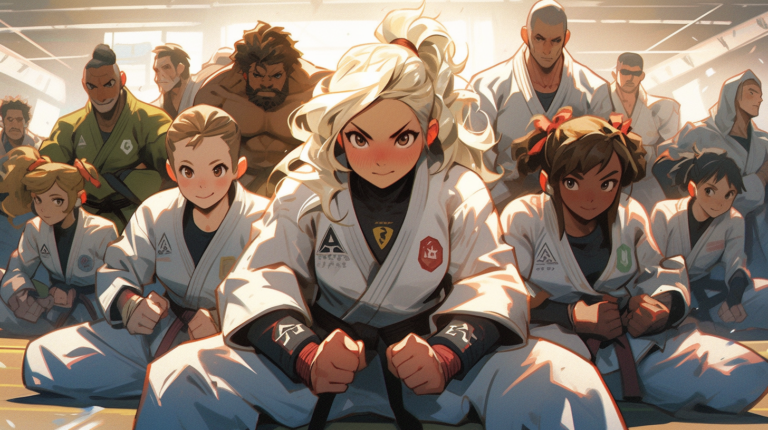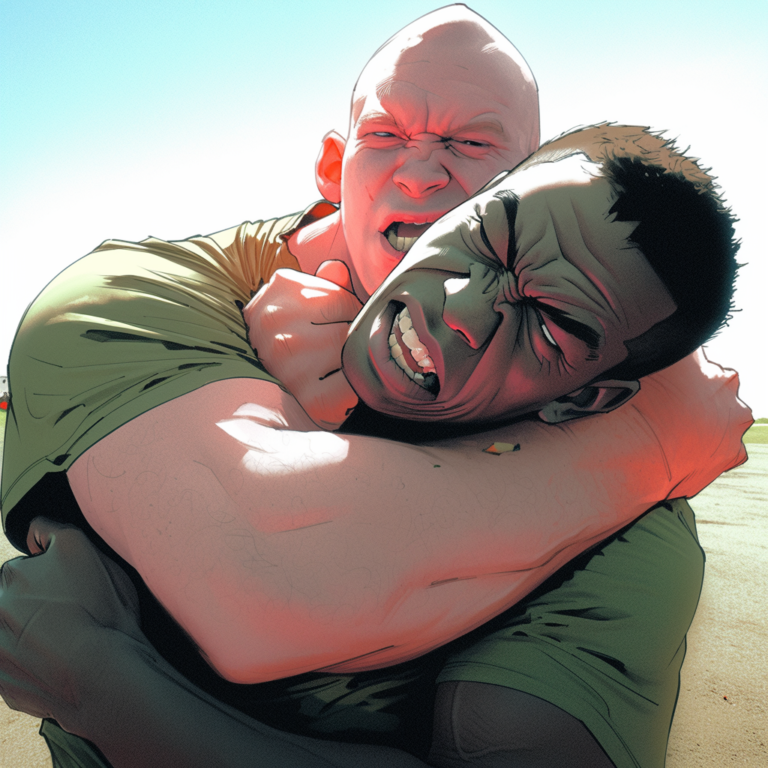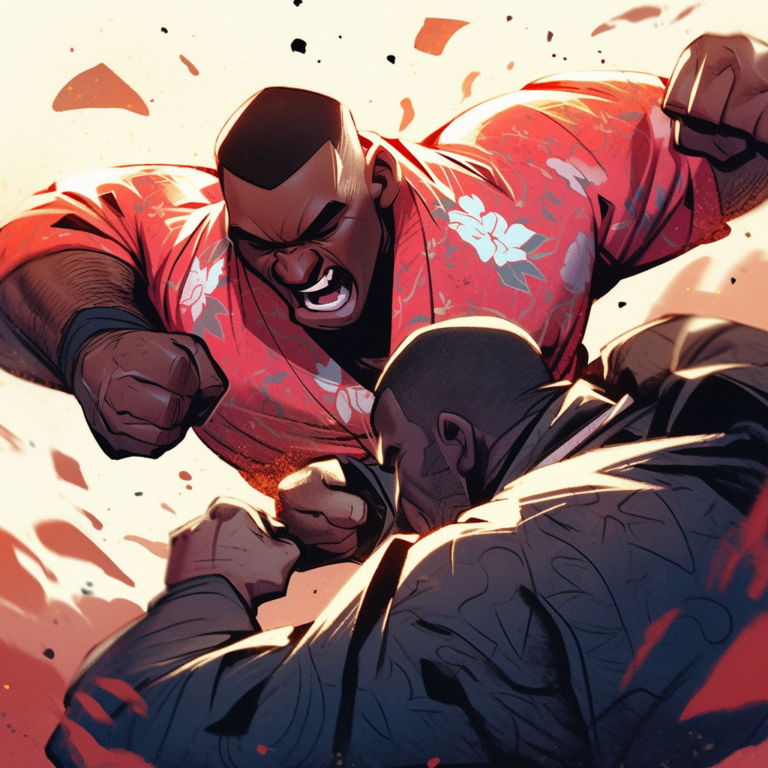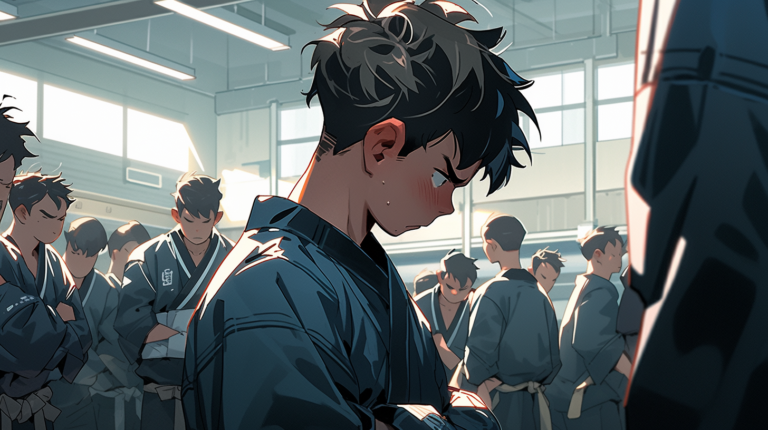Jiu Jitsu Workout: 10 Exercises, 30 Minutes
Introducing the Jiu Jitsu Workout
Getting fit and improving your jiu jitsu performance is about having the right jiu jitsu workout. One that isn’t just about getting more repetitions or lifting heavier weights at the gym. It’s about learning to control your body with proper form, the right routine, and the right mindset. What if you could combine all these aspects into one exercise routine? Welcome to the Jiu Jitsu workout! In this article I will go over my at home body weight jiu jitsu workout routine I use to prep from competition.
The Warm up:
Stretching before a Jiu Jitsu workout is not just a warm-up routine; it’s a vital part of your training. It enhances flexibility, improves performance, and reduces the risk of injuries. When you stretch, you’re essentially preparing your body for the physical exertion that’s about to come. It’s like telling your muscles, “Get ready, we’re about to do some serious work.”
The Core of the Jiu Jitsu Workout
Once you’re sufficiently stretched out, it’s time to jump into the heart of the workout. Here are the moves you need to master: Sprawls, Burpees, Leg Raises, Push-ups, The Bear Crawl, The Plank, Mountain Climbers, Russian Twists, and The Squat.
Sprawl: A Fundamental defensive Technique
In Jiu Jitsu, a sprawl is a reflexive defensive technique against takedown attempts, particularly those targeting the lower body. The action involves dropping your hips, shooting your legs backward, and placing your weight on the opponent. The goal is to prevent the opponent from gaining control of your legs and subsequently your position.
Major Benefits of the sprawl exercise & your jiu jitsu workout
Sprawls simulate the action you’d make while defending against a takedown. It is an effective defense against takedowns. By mastering this technique, a practitioner can neutralize aggressive takedown attempts, maintain their standing position, and possibly transition into a more advantageous position.
| Repetitions | 10 – 20 |
| Sets | 3 – 5 |
| Time | 3 Minutes |
- Stand straight with your feet shoulder-width apart and your hands in a defensive position.
- Bend at your hips and knees to lower your upper body while keeping your chest up. Place your hands on the ground in front of you. Quickly shoot your legs backward to land in a plank-like position. The goal is to get your hips and pelvis as close to the ground as possible without lying flat.
- Push off with your hands and bring your legs forward to return to the standing position.
- Repeat this sequence for a set number of repetitions or a set time period.
Jiu Jitsu Burpees: Improving Strength, Stamina
A burpee is a full-body exercise that engages multiple muscle groups. It involves transitioning from a standing position to a squat, kicking your feet back into a plank, returning to a squat, and finally exploding into a jump.
Major Benefits of the Burpee & your jiu jitsu workout
Jiu Jitsu involves the entire body, and so do burpees. By performing burpees regularly, you build strength in your legs, core, and upper body. On top of working your cardio condition and the ability to go from your feet to floor.
| Repetitions | 10 – 20 |
| Sets | 3 – 5 |
| Time | 3 Minutes |
- Start with your feet shoulder-width apart, your back straight, and your arms by your sides.
- Bend at the hips and knees to lower your body into a squat position. Place your hands on the floor in front of your feet.
- Kick both feet back at once to move into a plank position, ensuring your body forms a straight line from your head to your heels.
- Quickly pull your feet back underneath you, returning to the squat position.
- Spring upward from the squat into a vertical jump, extending your arms above your head.
- Upon landing, immediately move into the next rep by squatting down and placing your hands on the floor.
The Role of Push-Ups in Jiu Jitsu Conditioning
Jiu Jitsu involves various movements that require upper body strength, such as grappling and executing defensive maneuvers. Regular push-ups help develop and maintain the necessary strength in the chest, shoulders, and arms.
Major Benefits of the Push-Up & your jiu jitsu workout
While they may seem straightforward, push-ups can be physically demanding when performed in high volumes. Regular practice can enhance your stamina and endurance, which are vital for lasting through lengthy and intense Jiu Jitsu matches.
| Repetitions | 10 – 20 |
| Sets | 3 – 5 |
| Time | 3 Minutes |
- Begin in a high plank position, with your palms flat on the floor, shoulder-width apart, and your feet together.
- Your body should form a straight line from your head to your heels.
- Lower your body until your chest nearly touches the floor.
- Push your body up back to the starting position, fully extending your arms. That’s one rep.
- Repeat this for the desired number of repetitions.
Unleashing the Power of the Bear Craw
Just as the name suggests, the bear crawl exercise involves moving on all fours, mimicking the gait of a bear. It’s a dynamic, full-body exercise that challenges your muscles from head to toe and pushes your cardiovascular system, all without the need for any equipment.
Major Benefits of the Bear Crawl Exercise & Your jiu jitsu workout
So, what makes the bear crawl such a valuable addition to your jiu jitsu workout regimen? Unlike many exercises that target specific muscle groups, the bear crawl is a full-body workout. It challenges your arms, shoulders, chest, back, core, glutes, and legs simultaneously, leading to comprehensive strength and muscle development. All of the muscles mentioned are crucial when you go to preform the various moves in bjj.
| Duration | 45 seconds of bear crawling with 15 seconds of rest |
| Sets | 3 – 5 |
| Time | 3 Minutes |
- Starting in a quadruped position, with your hands beneath your shoulders and your knees beneath your hips
- Lift your knees a few inches off the ground. Maintaining this posture
- Start moving forward, opposite arm to leg. Ensure your back remains flat and your core engaged throughout the movement.
Building a Solid Base for Jiu Jitsu with Squats
Bodyweight squats are a powerhouse for building strength in your lower body. The downward and upward movements of the squat exercise target your quadriceps, hamstrings, and glutes, leading to increased muscle mass and strength in these areas.
Major Benefits of the Squat Exercise & Your jiu jitsu workout
Jiu Jitsu involves a lot of movements that demand lower body strength, including standing, groundwork, and takedowns. Squats can help you develop the necessary power in your lower body to perform these movements effectively.
| Repetitions | 10 – 20 |
| Sets | 3 – 5 |
| Time | 3 Minutes |
- Stand tall with your feet hip-width apart. Point your toes slightly outwards. Extend your arms in front of you at shoulder height for balance.
- Inhale and start to lower your body.
- Push your hips back and bend your knees as if sitting in a chair. Keep your chest up and your back straight.
- Continue lowering your body until your thighs are parallel to the floor, or as far as your flexibility allows without discomfort. Your knees should be directly over your ankles, and your buttocks should be in line with your knees or slightly lower.
- Exhale as you push through your heels to return to the starting position. Squeeze your glutes at the top for maximum benefit.
Jiu Jitsu Planks: Building Core Strength for Improved Technique
In Jiu Jitsu, a strong core is vital. From executing throws to maintaining control over your opponent, much of your power comes from the core. Planks are an excellent exercise for building this essential core strength.
Major Benefits of the Plank Exercise & Your jiu jitsu workout
The plank also helps develop stability, reducing the risk of injury. It strengthens your lower back and promotes better posture, both of which are beneficial for the intense physical demands of Jiu Jitsu.
| Duration | 45 seconds of planking with 15 seconds of rest |
| Sets | 3 – 5 |
| Time | 3 Minutes |
- To perform a plank, start by positioning yourself face down on the floor.
- Place your elbows directly under your shoulders with your forearms parallel to each other.
- Extend your legs behind you, resting on the balls of your feet.
- From this position, raise your body off the ground, maintaining a straight line from your head to your heels.
- Be careful not to let your hips sag down or rise too high, as this can cause strain on your lower back.
Russian Twists: A Secret Weapon for Jiu Jitsu Core Training
The Russian Twist, a core-centric exercise, is an essential component in Jiu Jitsu training. It plays a vital role in building core strength and improving your ground game. Let’s explore its importance and learn how to perform it correctly.
Major Benefits of the Plank Exercise & Your jiu jitsu workout
This exercise involves a twisting motion that mimics many movements in Jiu Jitsu, like executing a throw or changing direction swiftly. Regularly performing Russian Twists can enhance your rotational power, making your techniques more efficient.
| Duration | 10 – 20 each side |
| Sets | 3 – 5 |
| Time | 3 Minutes |
- Start by sitting on the floor with your knees bent, feet flat on the ground.
- Lean back slightly, maintaining a straight back, and lift your feet off the floor. You should now be balancing on your tailbone.
- Clasp your hands together in front of you, and twist your torso to the right, bringing your hands towards your right hip.
- Return to the center, then twist to the left. That’s one rep.
- Keep repeating this, alternating sides.
Incorporating Mountain Climbers into Your Jiu Jitsu Training
Mountain climbers are a fantastic full-body workout. They target the core, upper body, and lower body, all of which are crucial for executing movements and techniques in Jiu Jitsu. By including this exercise in your routine, you can develop the functional strength necessary for effective grappling.
Major Benefits of the Plank Exercise & Your jiu jitsu workout
Jiu Jitsu matches can be physically exhausting. Mountain climbers can help build cardiovascular endurance, allowing you to maintain your performance throughout long training sessions or matches.
| Duration | 45 seconds of Mountain Climbers with 15 seconds of rest |
| Sets | 3 – 5 |
| Time | 3 Minutes |
- Start in a high plank position, with your hands shoulder-width apart, directly beneath your shoulders. Your body should form a straight line from your head to your heels.
- Draw one knee up towards your chest while keeping the other leg extended.
- Then, quickly switch your legs, driving the extended leg towards your chest while extending the other.
- Maintain a brisk pace, as if you were running up a hill.
- It’s important to keep your core engaged and your back flat throughout the movement. Avoid sagging hips or an arched back as these can lead to strain and injury.
Jiu Jitsu Leg Raises: Strengthening Your Lower Abs for Ground Game
In the realm of Brazilian Jiu Jitsu (BJJ), strength and conditioning play significant roles in enhancing performance and reducing the risk of injuries. Among the essential exercises for BJJ practitioners are leg raises, known for their efficiency in building core strength and improving hip flexibility. Let’s delve into the benefits of leg raises for Jiu Jitsu and how to execute them properly.
Major Benefits of the Plank Exercise & Your jiu jitsu workout
Leg raises primarily target the lower abdominals but effectively work the entire core, including the hip flexors. Core strength is vital for Jiu Jitsu practitioners for various movements such as guard retention, hip escapes, and sweeps.
| Duration | 10 – 20 |
| Sets | 3 – 5 |
| Time | 3 Minutes |
- Lay flat on your back on a mat with your arms at your sides, palms down.
- Keep your legs extended and close together.
- Slowly raise your legs perpendicular to the floor while keeping them straight.
- Engage your core throughout the movement.
- Lower them back down without letting them touch the floor.
- Repeat the movement.
Key Reminders for a Successful Workout

Always remember to keep a water bottle nearby and stay hydrated. Maintain correct form throughout the workout to get the best results and avoid injuries. If you have access to equipment and can safely use weights, you can increase the challenge of this workout by adding weighted variants of some exercises.
Cooling down after a workout is as important as warming up before it. Conclude your session with a 5-minute stretch focusing on the areas you’ve worked the most during the workout. This will help to reduce muscle tension and prevent injury.
Conclusion
The Jiu Jitsu workout is more than just a routine; it’s a complete guide to building strength, endurance, flexibility, and power, elements critical for any martial arts enthusiast. With a clear structure and focus on form, it’s an excellent option for anyone wanting to elevate their fitness and martial arts performance. So why wait? Start today!
FAQs
- Can beginners do this Jiu Jitsu workout?
Yes, this workout is designed to be accessible for beginners, with options to increase difficulty as your fitness level improves. - How often should I do the Jiu Jitsu workout?
Aim for 3 times a week, with rest days in between to allow for muscle recovery. - What if I don’t have any equipment?
No problem! This workout focuses primarily on bodyweight exercises that require no special equipment. - What is the purpose of the sprawl in the workout?
The sprawl simulates a common defense move in wrestling and Jiu Jitsu against takedowns, hence its inclusion. - Why is hydration important during this workout?
Staying hydrated helps maintain your body’s function during the workout and aids in recovery afterwards.







